COVID-19 SPECIAL
Back to school: How life for pupils resumes amid Covid-19 outbreak across East Asia
Sign up now: Get insights on Asia's fast-moving developments
Katherine Wei, Chang May Choon, Claire Huang, Walter Sim
Follow topic:
SEOUL - With a haversack on her back and a mask on her face, seven-year-old Kim Kyu-rim went to primary school in Seoul for the first time on May 27 - more than three months delayed due to the coronavirus outbreak that has infected over 11,000 people in South Korea.
While she was excited to meet new friends at Soong Eui Elementary School, she was unable to get too close to her schoolmates due to safe distancing rules.
"When I arrived in school with a neighbourhood friend on the school bus, a teacher told us to separate and not stand together, because of the coronavirus," the first-grader told The Straits Times.
"And we have to sit alone in class with a plastic divider on our desk, not two by two as usual."
Schools have reopened in phases since May 20, starting with classes for high school seniors, but life in school post-Covid-19 is no longer the same.
Mask wearing and frequent temperature checks, hand sanitising and desk disinfection are now the norm, while transparent plastic dividers are put up in canteens and classrooms to prevent any possible spread of the virus when masks come off during meal time.
Face-to-face lessons are alternated with online learning as schools are not allowed to have more than one-third of its student population on campus at each time, according to guidelines from South Korea's education ministry.
Schools across Asia, from China to South Korea, Japan and Singapore, have reopened in recent weeks as the coronavirus situation stabilised and the authorities pushed for resumption of normal daily life.
The virus, first reported in China's central city of Wuhan, has infected more than 6.9 million people around the world and killed over 400,000, mostly in the United States, Brazil, Russia and Spain.
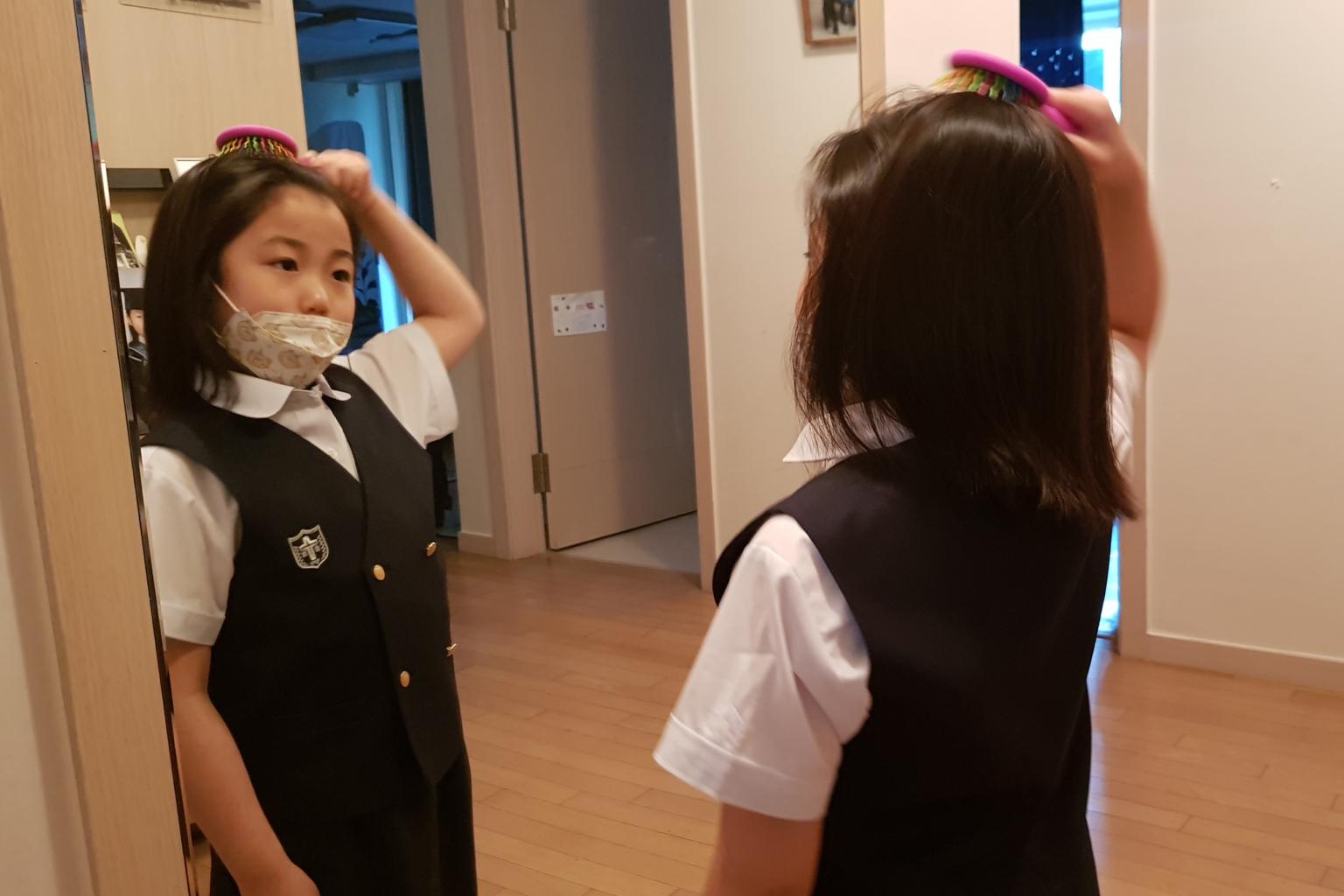
BACK TO SCHOOL: JAPAN
In Tokyo, classmates Rena Nakamura and Tamako Aoyama are finally able to see each other again after having spent the last three months mostly stuck at home as the number of Covid-19 cases climbed beyond 17,000.
"I am very happy that school has reopened and I am able to talk to my friends and teachers again," said Tamako, 12, who attends the Toshima Municipal Gyoko Elementary School, which reopened on June 1.
Rena, 11, said the past months had been "extremely lonely". "We are now in our last year of elementary school, and I could not help but wonder if there is enough time to create memories."
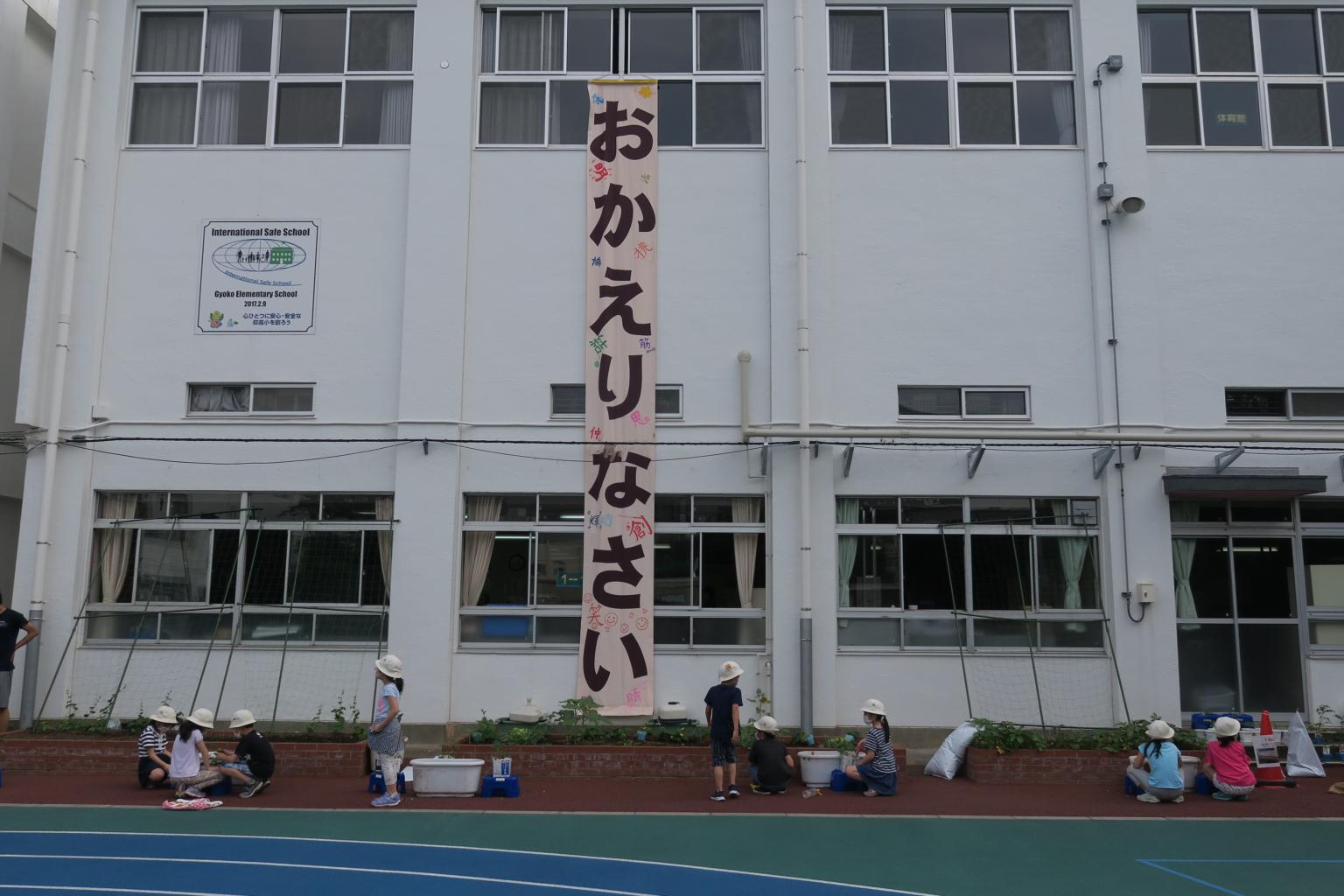
At the 144-year-old school, a huge banner that reads "okaerinasai" ("welcome back") greets its 338 pupils across six grades as they enter the school ground.
For this month, the school has adopted a "split class" system, with each class divided into two groups that attend school in separate sessions in the day.
Principal Yutaka Arai told ST that the month of June will be used to ease students back into the routine of school after an unprecedentedly long break.
Second-graders, for instance, had fun on their first week back in school in horticulture class, an outdoor session where they learnt how to plant tomatoes in cartons that they could then take home.
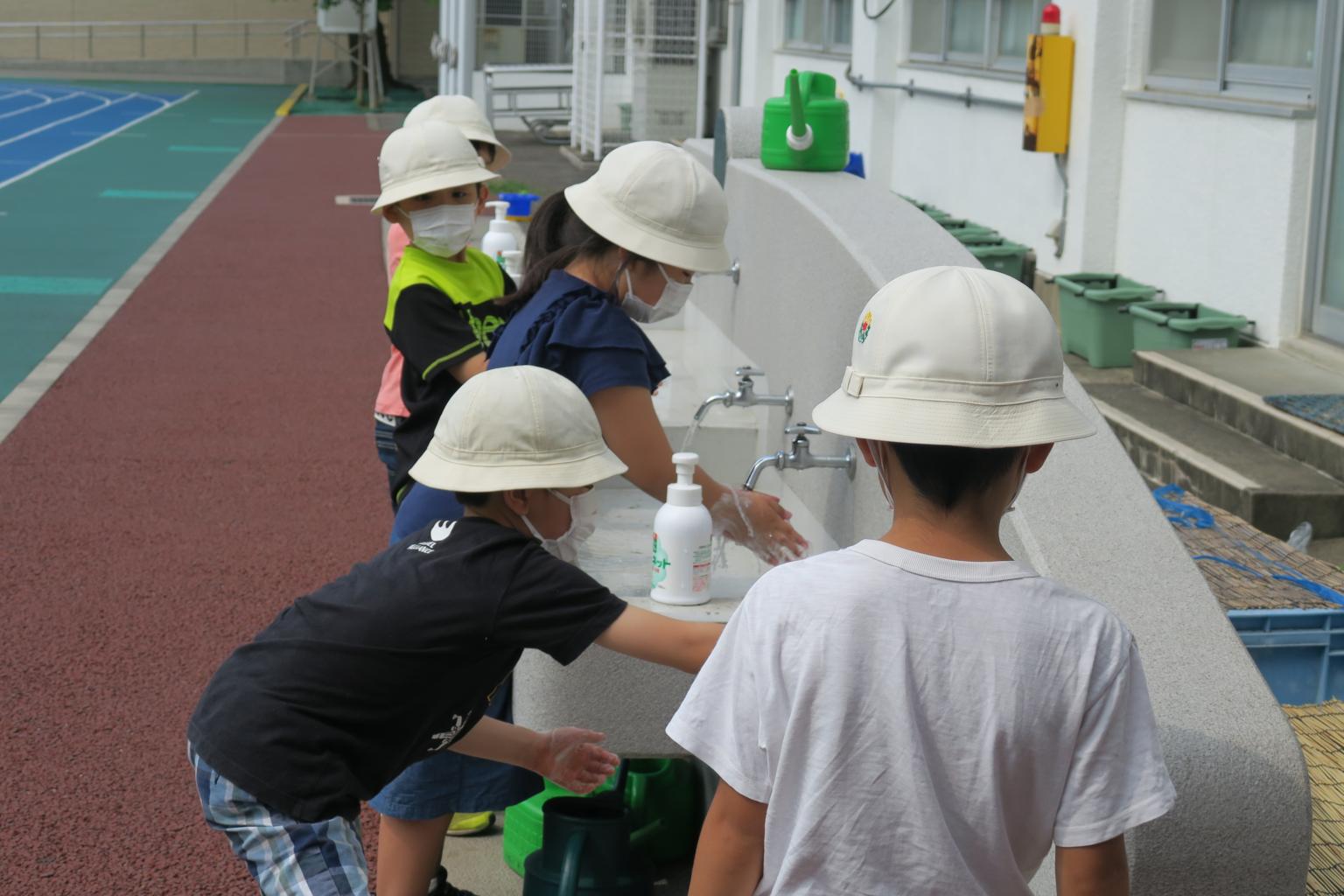
Notwithstanding a new wave of coronavirus infections, with Tokyo Governor Yuriko Koike having issued a "Tokyo Alert" last week following an increase in cases, Mr Arai said that he hopes classes can resume as per normal next month.
Toshima, which is one of Tokyo's 23 wards and comprises the commercial district Ikebukuro, is one of the latest to do so for publicly-run schools.
Taito ward, which is home to the traditional Asakusa, for instance, will end its split class system on June 19. Others, like Shibuya, have not yet decided, according to survey results released last Thursday (June 4) that were seen by ST.
In the meantime, Toshima is ramping up its efforts on information and communication technology (ICT) so that e-learning can be conducted smoothly if schools have to close again.
"The education system will collapse if schools were to close again," said vice-principal Shuji Higano, adding that while some degree of online and self-study was conducted, it was more difficult to track a pupil's progress.
JAPAN'S STRUGGLE: WHEN TO REOPEN SCHOOLS
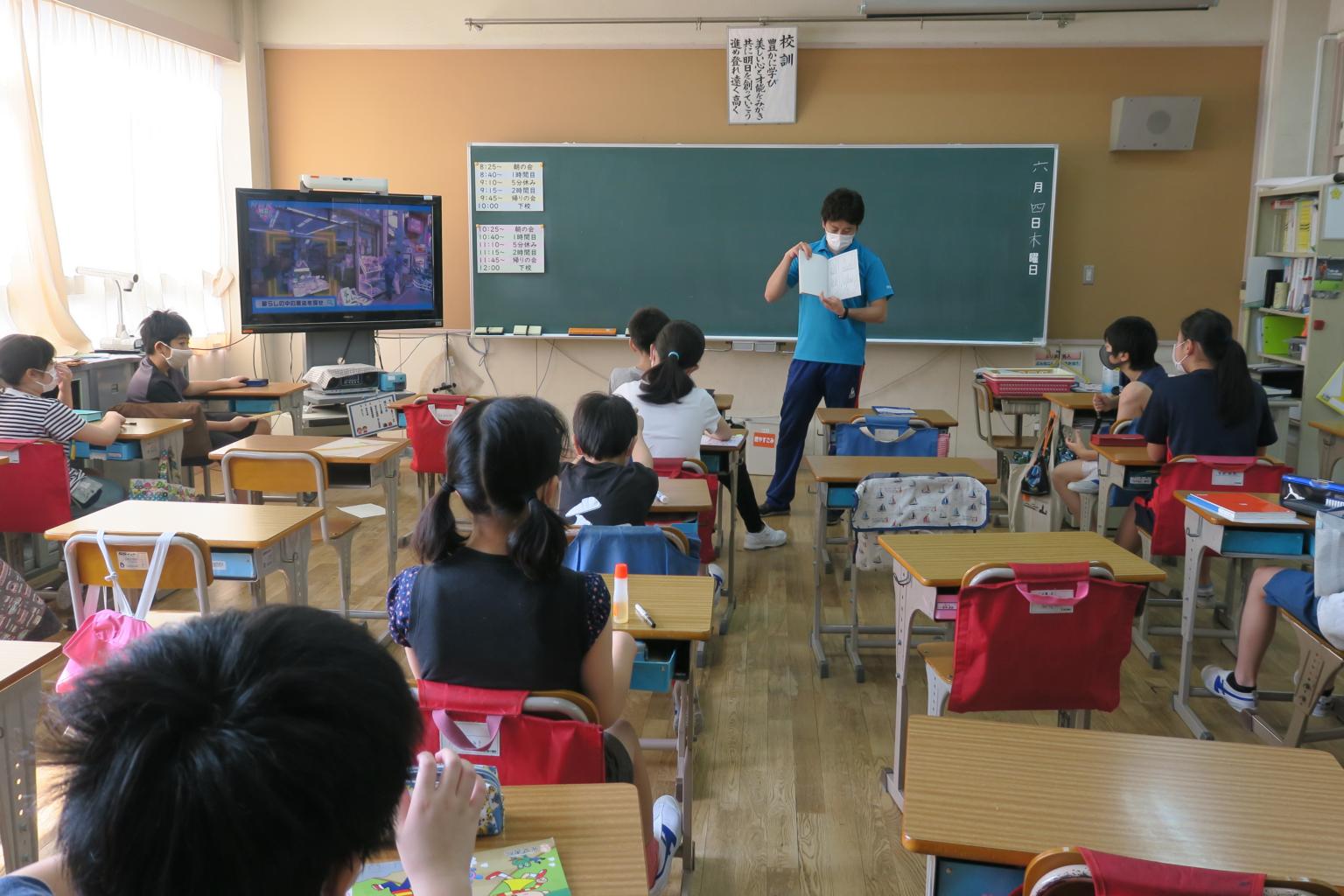
Japan, which declared a wide state of emergency on April 7 that was lifted progressively in different areas before ending totally on May 25, has struggled with various options on this matter.
One was to shift its academic calendar - which has long started in April in line with spring and the fiscal year - to September in line with other countries, with the aim of making Japan a more desirable overseas study destination for foreigners.
This has been put on hold until at least 2022, with stiff opposition even within Prime Minister Shinzo Abe's ruling Liberal Democratic Party that says such a drastic move should not be made in haste.
"This has been a subject of frequent debate, but this is not just a school issue but a social system issue," said Mr Tetsuyoshi Tokuda of the Tokyo Metropolitan Board of Education. "It is necessary to listen to a wide range of voices of the parties concerned, including schools, parents and children, and to consider from a broad perspective."
In the end, schools were allowed to resume as normal, but with shorter summer holidays, while Saturday classes are being considered to ensure that the curriculum material can be adequately covered.
Toshima Elementary's principal, Mr Arai, admits that his staff are on edge over the risk of a coronavirus cluster emerging in schools, seeing that this has happened in Kitakyushu, an industrial city in southwestern Fukuoka.
The city is on the front line of Japan's second wave of infections, having registered 130 cases over 13 days after recording none from April 30 to May 22.
Among them are 13 elementary and junior high school students, in what is the first school cluster in Japan.
Schools in Kitakyushu, which reopened on May 14, have since had to split classes again.
"It is difficult to avoid the risk of infection completely in any area, not just Toshima ward or Tokyo," said a Toshima spokesman.
"What we can do is take the necessary steps and raise awareness among students so as to reduce this risk of infection," she added.
Toshima elementary's students Rena and Tamako said school as it is currently is unlike what they were used to in the past.
Their class of 28 is now split into two to ensure social distancing, with an empty row of tables between pupils.
This comes as the school is implementing measures to avoid situations of what Japan brands the 3Cs (closed spaces, crowded places, close-contact settings), while extracurricular activities and sports events have been cancelled or put on hold.
The wearing of masks is now strictly enforced, while pupils must wash and disinfect their hands before they enter a classroom.
Pupils are expected to record their daily temperatures at home on a "health inspection sheet" in the morning, which they are then to submit to their form teacher every morning.
These measures will stay for some time, with Mr Higano noting that a world "with coronavirus" is at this point much likelier than a world "post-coronavirus".
"The ironclad rule is that the safety of our pupils will always come first," Mr Arai added.
BACK TO SCHOOL: HONG KONG
In Hong Kong, even as schools reopened from May 27, some parents voiced concerns about their children adapting after a long break and if there are enough safety measures.
Mr Augustine Soon said his 12-year-old daughter, who will return to Primary 6 in two weeks, is worried about her studies.
"She has stopped school for quite some time already and to me Primary 6 is a leap to secondary school, so if she's not in school for that long a time, I'm afraid she will have problems getting used to life in secondary school," said Mr Soon, 46.
Public schools in Hong Kong have been closed since the Chinese New Year holidays in January in the light of the coronavirus outbreak. There are now over 1,000 cases.
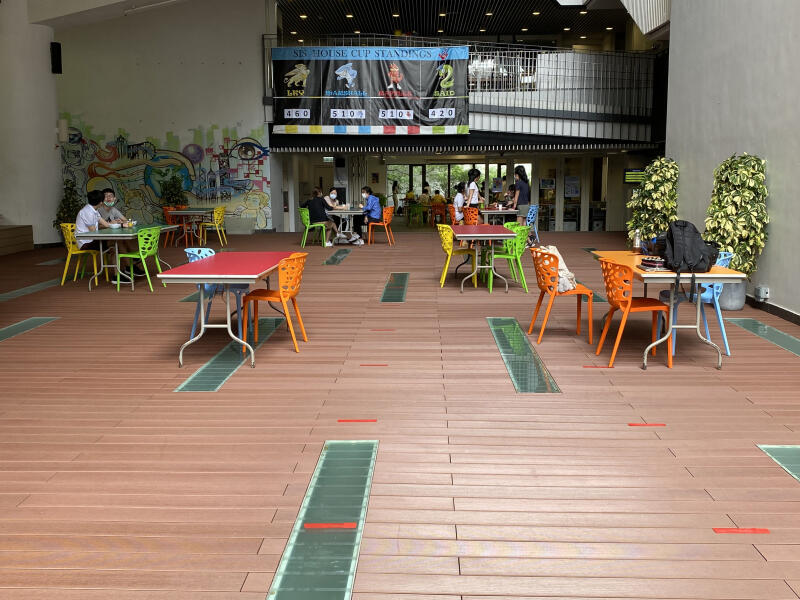
Higher secondary students (Secondary 3 to 5) returned to public schools on May 27, while the younger cohorts are expected back in classes on June 8 and 15.
Mr Raju Pusapati, said it was important for his six-year-old son to learn to socialise. But he feels uneasy despite the precautions in schools as Covid-19 cases still lurk unknown.
"We intend to send him to school but probably not full-time. We'll probably send him on alternate days just to see how things are panning out and slowly we'll start building it up," said Mr Pusapati, 37.
The Education Bureau has set out guidelines on precautionary measures to be taken in both public and private schools.
These include having students seated 1m apart, mandatory mask wearing and hand sanitising, staggered recesses and shorter hours to avoid having students lunch in schools.
At the Singapore International School, lesson periods have been shortened and it operates as a half-day school, similar to the local institutions.
English teacher Nattaporn Brampy, 31, said a key change was delivering the same curriculum in a different way. "I think that was one thing that was quite a challenge but interesting for all of us as a learning experience."
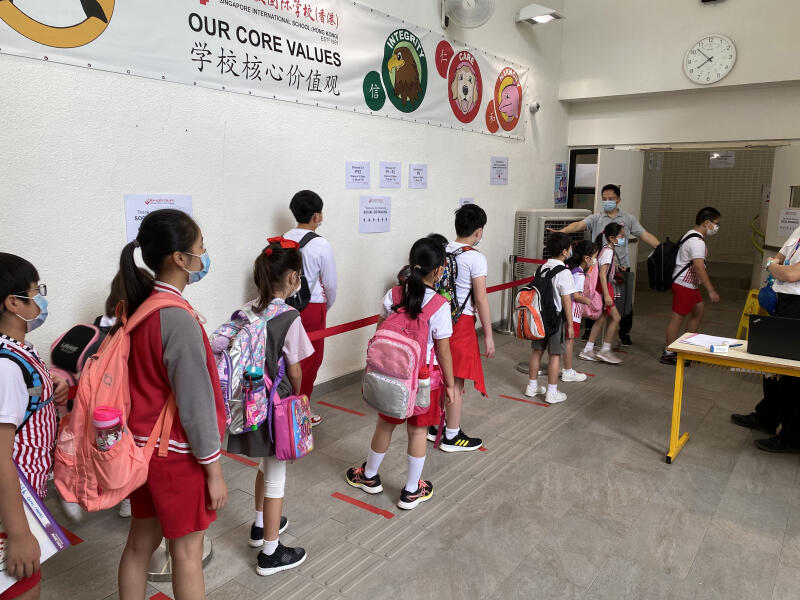
After four months of home-based learning, Ms Brampy said students have generally been excited to return to school. "You could see their smiling faces after they saw everyone… and I think the kids were generally quite happy to be back, and they actually adapted very quickly to the new norm."
Meanwhile, the older cross-border students from the mainland have returned to schools in Hong Kong. They can now travel via Shenzhen Bay Port or Futian/Lok Ma Chau Spur Line Port, which is not applicable to other travellers.
The Education Bureau said students would be subject to health safeguards on either side of the border every day. This includes temperature checks, submission of health declaration forms to the staff of the Department of Health, health and precautionary surveillance implemented by schools during school time, and presenting a negative nucleic acid test result - valid for only seven days - to the Shenzhen authority.
Currently, social distancing measures, including limitations imposed on restaurants and a ban on public gathering of more than eight people, have been extended from June 4 to June 18, as the authorities warn of a local outbreak that has infected at least nine people.
SCHOOL AS USUAL IN TAIWAN
Over in Taiwan, the coronavirus' impact on the school system was less severe. There are only over 400 cases reported, low compared with other regions in East Asia.
Taiwan has kept its schools open in the past four months, after initially delaying the schools' opening for two weeks after the winter break. Some classes at six universities were cancelled or moved online after they reported confirmed cases between February and April.
In February, the Ministry of Education announced rules for schools to follow in case classes needed to be suspended, also asked schools to monitor students' health conditions, keep the campus disinfected and follow up with students and teachers who have travelled.
Throughout the island, schools like the Affiliated Senior High School of National Taiwan Normal University have been relying on thermal temperature checks at their entrances - and once more at noon in the classrooms - to keep the virus out of campus.
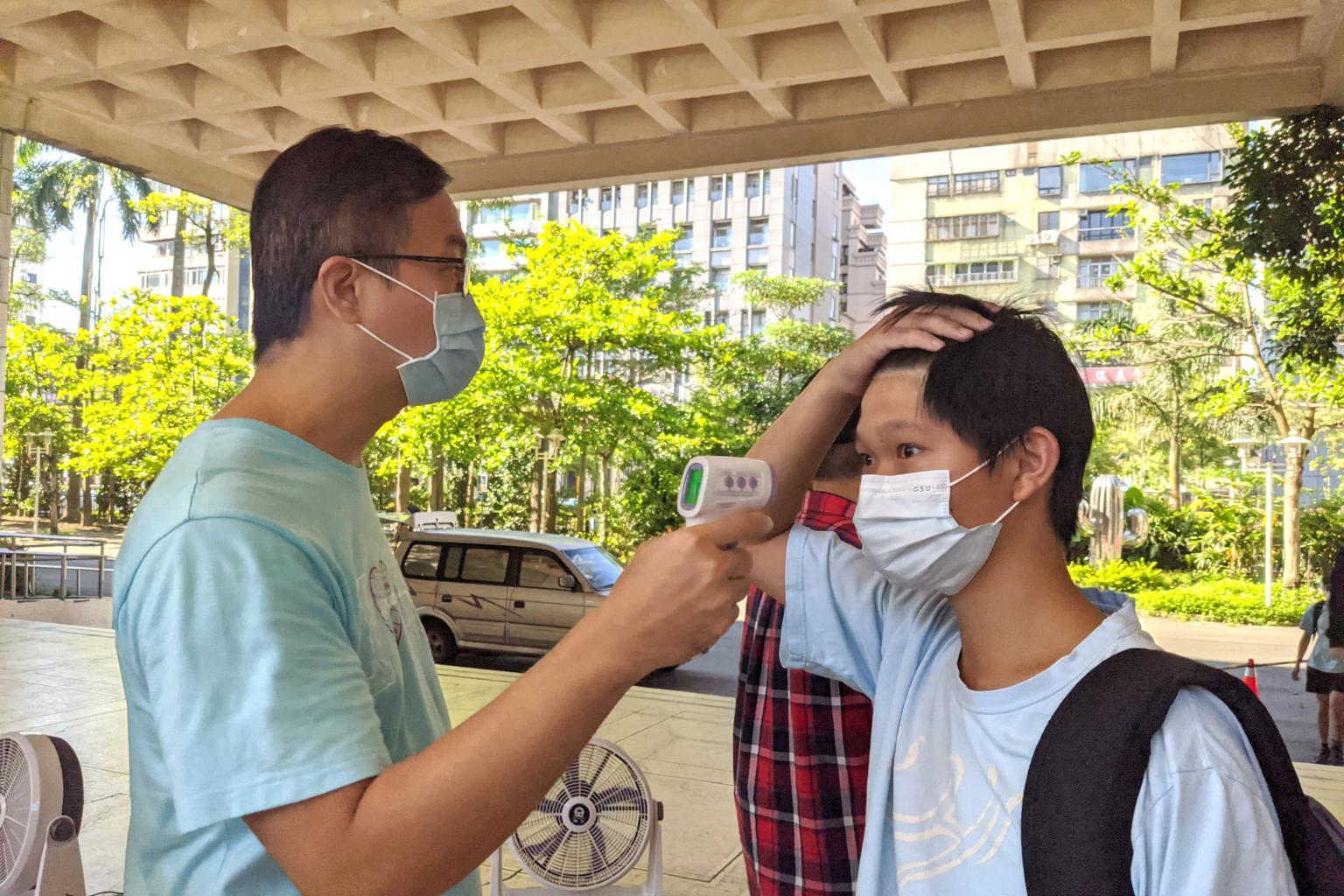
"We've also cancelled all school assemblies, including the weekly flag-raising ceremonies," said Mr Lin Yung-shun, the school's director of student affairs.
But extracurricular activities, mainly student-run clubs that meet after school, have continued as a means to make sure the students stay in a safe environment.
"Their annual performances are cancelled, but we allow their daily gatherings because we worry that they might go elsewhere and possibly contract the virus if we ban extracurricular activities after school," said Mr Lin.
The school has suggested that the students wear masks to school, and most of them do, but there are no strict government regulations that deem this necessary. Nor is social distancing a requirement.
"In PE (physical education), I tell them it's okay to take the masks off because it's hard to catch your breath, and it gets really hot," said PE teacher Ko Kuan-ming, who is also the principal's secretary.
For students like Chen Yuan-ling, the main difference is "we can't get lunches delivered (via Foodpanda and Uber Eats) now, and senior prom got pushed back from March to July".
BACK TO SCHOOL: SOUTH KOREA
In South Korean schools, like elsewhere, new norms are aplenty.
Schools will fully reopen by Monday (June 8), with the last two grades of elementary school among the last to go back to school.
The education authorities had pushed for school reopening in four phases from May 20, stressing the importance of resuming everyday life, despite growing concerns over a second wave of infections around Seoul as small clusters emerged in nightclubs, churches and a goods distribution centre.
A strict social distancing policy is in place in Seoul, as well as neighbouring Incheon city and Gyeonggi province, until June 14, as the number of daily new cases hovered around 50.
For Kyung Hee Elementary School in Seoul, this means that only two out of six grades can be in school at any one time, and students are constantly reminded by teachers, banners and posters to abide rules such as wearing masks, washing hands frequently, keeping at least 1m apart, and opening the windows to allow better ventilation.
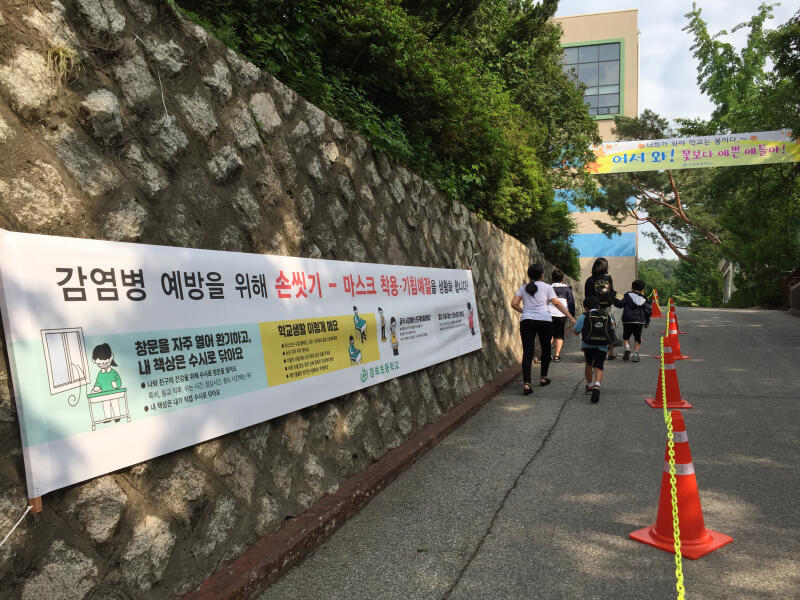
Other preventive measures include installing transparent plastic screens on dining tables in the canteen and requiring students to occupy alternate seats without facing each other during meal time. Those who dine in their classrooms will use portable plastic dividers instead.
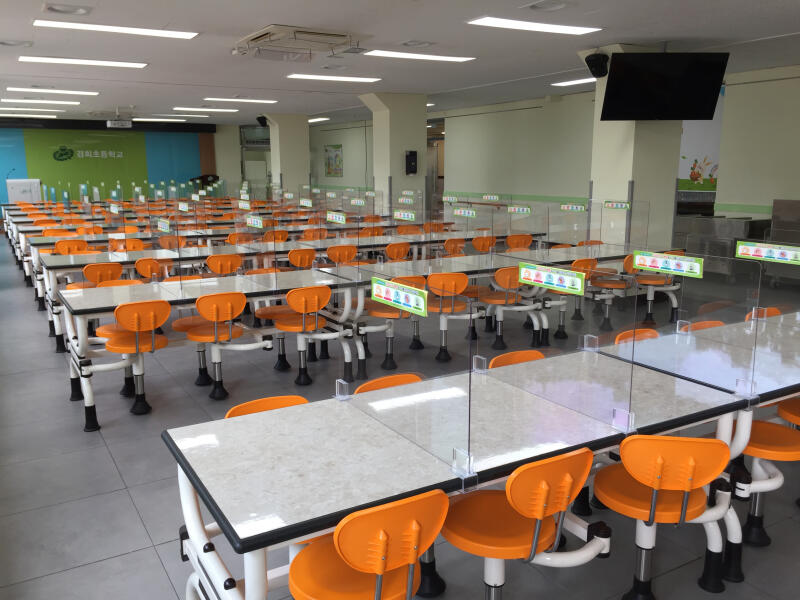
Temperature screening is also a daily affair, and those who clock temperatures above 37.5 deg C will be sent home in a vehicle installed with a divider between driver and passenger.
Frequent disinfection - from daily cleaning of desks to monthly spraying of the whole school - is also key, said principal Ji Yeon-mi.
The 59-year-old school, which has 574 students, has so far spent 65 million won (S$75,400) on preventive measures, including disinfection and thermal cameras, and acquiring new laptops to lend to students in need.
"We cannot go back to life before the coronavirus, but we will do our best in the current situation for the safety of our students, our teachers, and everyone," Ms Ji said.
Safeguards extend to the smallest details, such as separating music students playing different instruments. Music students playing the violin can do it indoors wearing their masks, said Ms Ji, but those playing wind instruments like flute and clarinet will have to take lessons outdoors.
The school also provides "emergency care" for students whose parents are unable to care for them at home, and who do not have a conducive home environment for online learning.
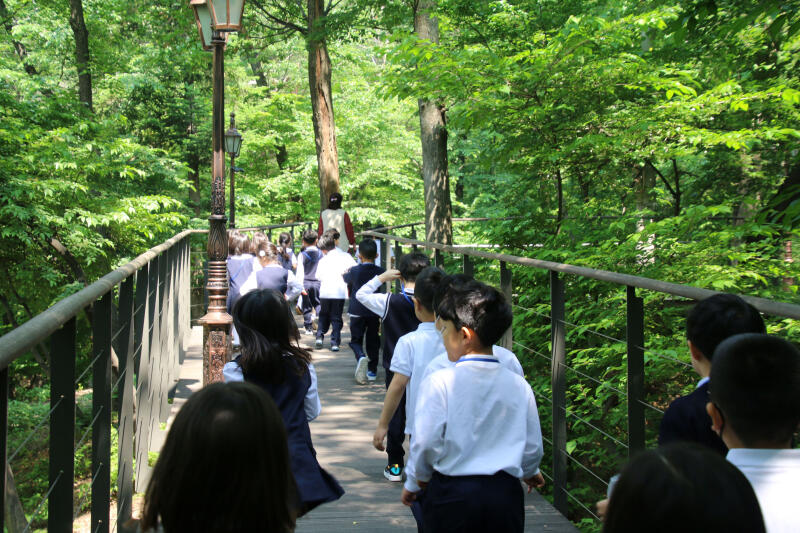
To help students cope with the discomfort of wearing masks all day, the school also allows teachers to take students out for a walk in the nearby forest, or conduct lessons there observing nature and writing poetry.
"They can take off their masks if they keep a 2m distance and breathe in some fresh air," said Ms Ji.
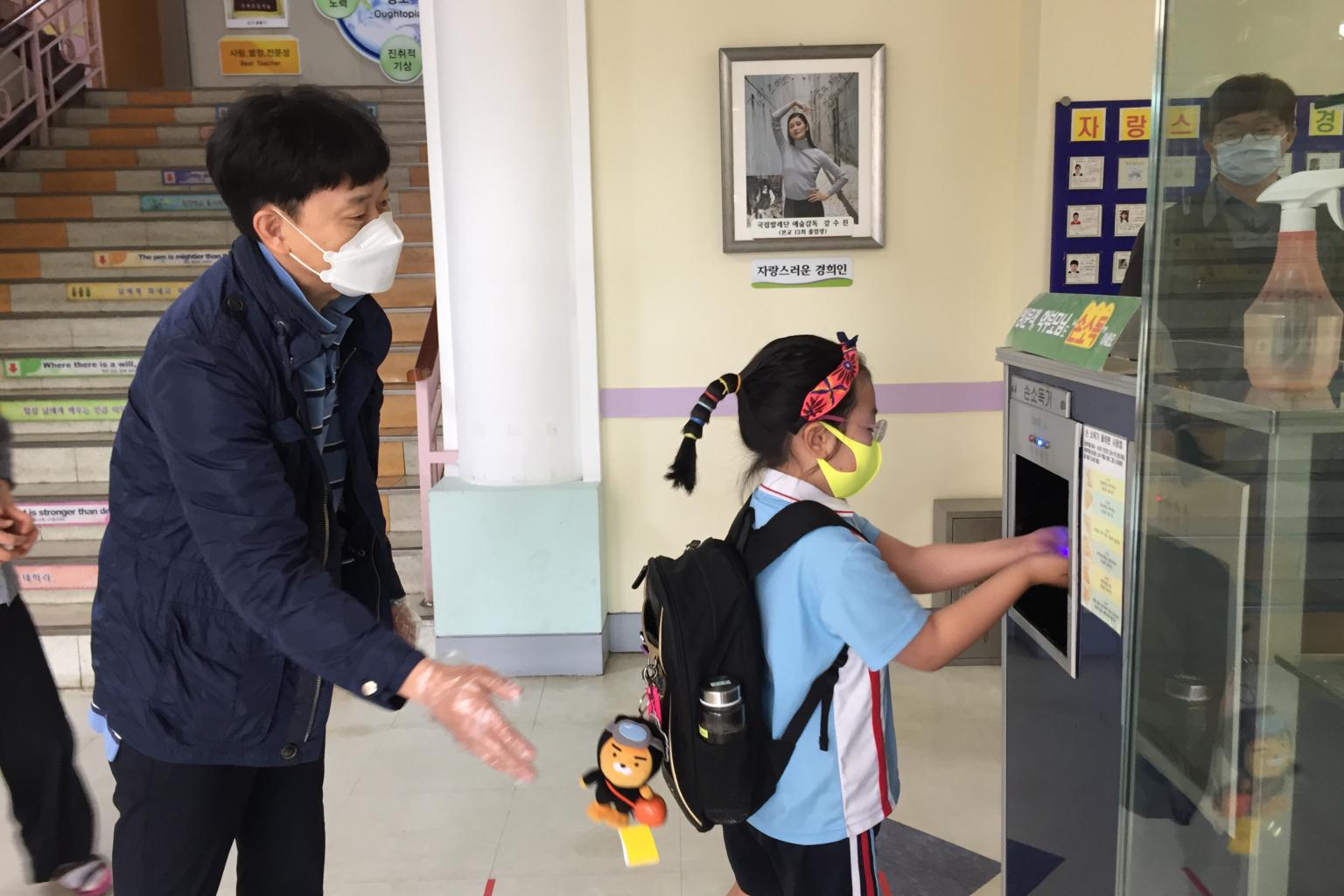
Meanwhile, school nurse Hong Mee-sook has been busy tracking everyone's health. She had two girls - one had a headache, the other felt cold - resting in bed at the school clinic when ST visited on May 28. Another student was turned away and sent home due to fever, she added.
Ms Hong said she has to send data about sick students to the education ministry every day, and that those with fever will have to monitor their symptoms and get clearance from a doctor before returning to school.
"We're quite well prepared in this because we've been going for training every year since we developed a health manual in 2016 after the Mers outbreak," she added, referring to the Middle East respiratory syndrome, which killed 38 out of 186 people infected in the country.
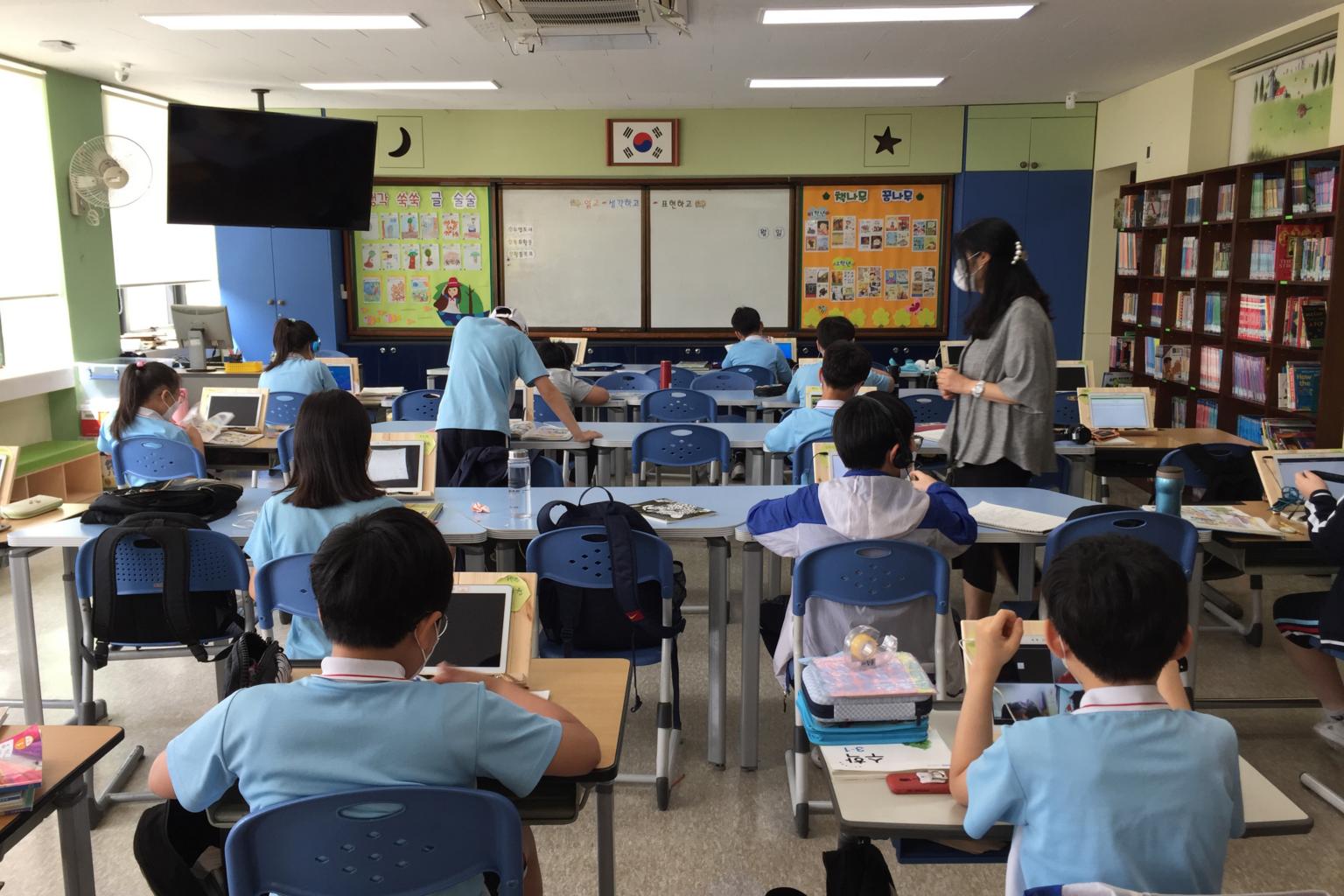
South Korea's ability to flatten the coronavirus infection curve quickly is much credited to its horrifying experience with Mers and changes in law and policies to better cope with a health crisis.
This time around, even the food menu had to be adjusted post-Covid-19.
Kyung Hee's nutritionist, Ms Kim Eun-hyung, spoke of how the government advised the school to prepare simple meals like sandwiches or curry rice, instead of the usual Korean meal that would comprise rice, soup, kimchi and three to four side dishes.
"But we felt that's not enough nutrition, so we decided to stick to our normal meals, but cut down on the number of side dishes," she told ST.
Principal Ji said many parents were concerned about the school's preventive measures before sending their children back to school, but they felt relieved after seeing how well prepared the school is.
"Everything is new to us too, so we have to keep adjusting our measures and policies along the way," she added.
Over at Soong Eui Elementary School, first grader Kyu-rim is well aware of all the measures after watching an educational video and constant reminders from teachers.
This includes wearing a "I want to go to the toilet" sign around their neck before heading to the lavatory, where a staff member monitors the number of students allowed inside, and bringing their own wet tissues to clean their desks in class.
"Teacher keeps telling us not to take off our masks, not to touch other people's things and to sanitise our hands, but I know all of that already," she said. "I know it's important because I don't want to get the coronavirus."
Her father, businessman Kim Jae-joong, 46, said he is not worried as he feels "coronavirus is just a mild flu virus".
"We cannot protect the kids 100 per cent. We can only tell them to be cautious, wear a mask and wash hands often."

